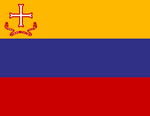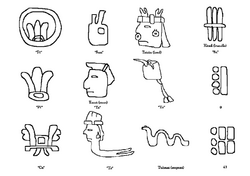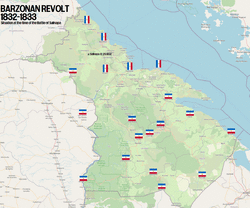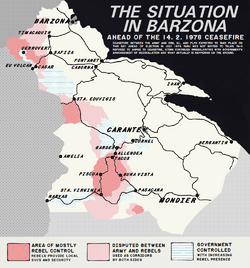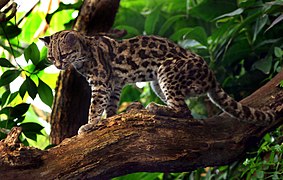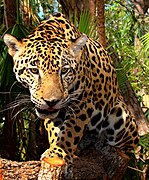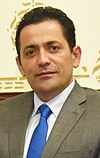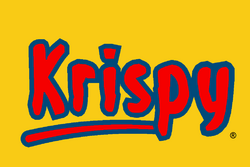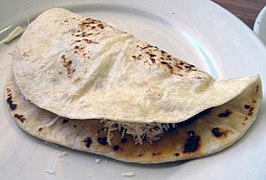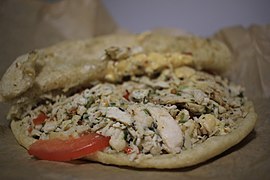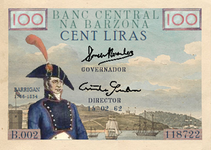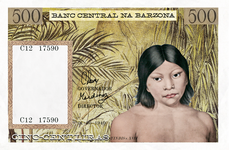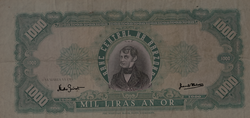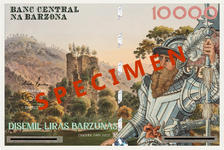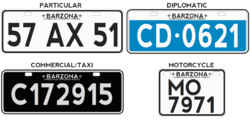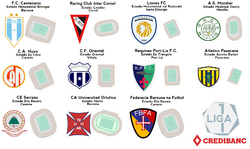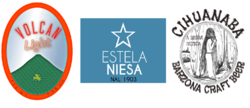Barzona
Loading map... |
Barzona, officially the Republic of Barzona is a country in southern Tarephia along the Strait of Lyc. Barzona is comprised of the mainland of Barzona along with two island departments. The capital city is Carante and the most populous city is Barzona. Barzona is divided into 16 departments, two of them are insular (island) departments away from Barzona). Mainland departments are divided into cantons, of which there are 90. Cantons and insular departments are divided into municipalities, there are 684 in Barzona.
Barzona was settled by several indigenous cultures prior to the time of colonization, with advanced civilizations and settlements. The Franquese were the first to colonize what is now Barzona, starting in the 13th century onward. The Castellanese settled Barzona in the 16th century, taking over from the Franquese. Barzona declared independence in 1817 and the entire territory was liberated from Castellanese rule in 1821. Barzona was a part of the Republic of Gran Fojenica (with Allendea) until 1833. Barzona went through a period of civil and military governments for many decades. From 1965 to 1978 Barzona was under a military dictatorship before transitioning to democratic rule.
Barzona is a member of the Assembly of Nations and Tarephian Cooperation Council.
| Republic of Barzona Template:Lang | |||||
|---|---|---|---|---|---|
| |||||
Loading map... | |||||
| Motto: "Terra libre, unita e feliz" A free land, united and happy | |||||
| Capital | Carante | ||||
| Largest city | Barzona | ||||
| Official languages | Barzuna | ||||
| • Regional languages | Franquese, castellanese, various indigenous languages | ||||
| Demonym | Barzuna | ||||
| Government | Constitutional, presidential republic | ||||
| • President | TBD | ||||
| • Vice President | TBD | ||||
| Legislature | Cogreso na Diputados | ||||
| Area | |||||
| • Total | 65405.65 km2 | ||||
| • Water (%) | 14% | ||||
| Population | |||||
| • Estimate (2019) | TBD | ||||
| • Census (2010) | TBD | ||||
| • Density | TBD/km2 TBD/sq mi | ||||
| Timezone | Central Tarephia Standard Time (WUT +1:00) | ||||
| Currency | Lira (BAL) | ||||
| Drives on the | right | ||||
Barzona, officially the Republic of Barzona (Barzonian: Republica na Barzona) is a country located in southwestern Tarephia. It is bordered by Hueyapan to the north, Allendea to the west and Broceliande to the south, as well as Valaga and Tempeira in insular areas. Barzona has a surface area of 56459.24km² (total with territorial waters 66939.56 km²) and a population of ?. The capital city is Carante, and the largest city is Barzona.
Barzona is a diverse country despite its small size, unofficially divided into five regions, costa (the coast), serra (the mountains), selva (the jungle), marca (the march) and insular Barzona. It is ecologically diverse, with a lot of flora and fauna, beaches, mountains and highlands, and dense, humid rainforest. Barzona is a member of the Assembly of Nations and the Tarephia Cooperation Council.
Etymology
The name of Barzona comes from the Franquese Barzone, which is believed to originate from a Taqueza speaking people in the coast of the country that died out during the early conquest of Barzona. Since the 19th century the people of Barzona have referred to themselves as "Montin" or "Montines" as a nickname, the origin is not entirely clear but a popular theory is that it came from "Belmontines", used to refer to the troops of Marshal Belmont during the war of independence.
History
Precolonial era
North of Barzona consisted of cities which were vassals of Teotiyolcan. The Areas that spoke the taqueza dialects were mostly as a separate kingdom resisting occupation by Teotiyolcan.
Medieval period
The coastal area and coastal-interior regions of Barzona were explored from Broceliande from the 13th century. Probably the first settled area of Barzona by the Rivagiens was the village of Sant-Miquel; the local church was consecrated in 1202. The indigenous people of the area attacked and harassed against the Franqueterre knights exploring the region, who were forced to build castles to defend their areas and became limited in their general settlement due to the difficulty in subjugating the indigenous peoples. By the end of the 13th century, the walled towns of Bergantin (ca. 1268) and Barzona (1280) were created to help control trade along the coast, followed by Port-Lis, Iban and Fontanet in the 14th century. Many villages in the Marca and Daube region were established.
By the early 16th century, they were still limited to a handful of coastal towns, castles and fortresses. In the early 15th century an expedition of knights sailed up the Yavi River in the jungle to explore the area, but were lost and likely died from disease or animals, or were killed by indigenous peoples.
The Castellanese arrived in t1650s, and over the next 40 years were able to subjugate a lot of modern-day Allendea and Barzona, having support from the coastal and lowland caciques for fighting the Franquese, and using their support to cross the mountains and settle them.
Independence and Gran Fojenica
Independence war
In 1817 the criollos of Carante and the highlands under Juan Piero Belmont began a revolt against the Castellanese, inspired by the similar war in Fojenica. 9 June 1817 the state of Carante was declared as a country after defeating the royalists at the Battle of Chilacana. In September 1817 Gen. Belmont joined Carante into the new Gran Fojenica republic. Progress by the rebels was slow but by 1819 most of modern day Barzona was under Gran Fojenican control except for the coastal area. Mateus Barrigan led the small Gran Fojenican navy and scored a major victory when the town of Bergantin was captured in April 1820. By August 1820 only the Barzona city area remained in royalist hands. Protected by earthworks in the interior, the Punta nord and Sant-Martin fortresses and the A Rocha castle it was too formidable to attack directly. A slow siege was ended in April 1821 when the Castellanese left the city.
Lucerist revolt
In the 1820s there were always issues and tensions between the Gran Fojenica government and the provinces, over language differences, favoring political positions to people from Bervoya, Central Fojenica, Carante and lack of pwoer and autonomy offered by the constitution to the provinces. In October 1826 Colonel Manuel Lucero y Quiroz started a revolt in the Barzona province in opposition to the Gran Fojenica government. Together with 600 troops and some naval cadets he took over the castles in the city and declared a separate state. President Julio Peort and Commandant General of Carante Count Lucio Belcamp began to raise a 1500 man army to march to Barzona and restore order. In response Fontanet, Safiza, Tunancinque and other towns declared themselves for Barzona and Col. Lucero apparently was looking to get a Ulethan prince to be King of Barzona to secure support from a foreign power. The revolt failed by March 1827 since Admiral Barrigan refused to support Lucero's revolt and no Ulethan country supported it.
Count Lucio Belcamp, the Commandant General of Carante was declared vice president of Gran Fojenica. and seemed to end major revolts for the time being. In August 1828 a mutiny by sailors was put down in Bergantin and conditions for sailors became poor over the next years.
Barzonan revolt
Over the early 1830s there was more dictontent over the taxation, diverting resources to Fojenican ports instead of Carantan or Barzonan ports among other issues. In November 1823 leading citizens and troops seized the major forts and barracks of the military and over the next weeks more cities declared themself in revolt to the government. Sailors mutinied and in this case Admiral Barrigan supported their demands and said he would travel to the capital to plead the naval case with the president and vice president. Vice President Belcamp organized 500 troops instantly to rally with over 1000 troops in Carante and march to Barzona. In December 26 troops organized in Montesanto and marched to Safiza. Outside of the village of Sulinapa 1700 government troops met 1500 rebel troops. Despite the superior numbers of the government troops mistakes on the right flank by Capt. Figueroa led to a break in the lines and over 200 soldiers died or were wounded versus only 60 rebels. The victory of Sulinapa saved the city of Barzona and more towns rose up in opposition. In this period the Gran Fojenican flag placed vertically was used as a symbol by the rebels.
The intent was to declare Colonel Manuel Lucero as leader but eventually the troops and sailors in revolt proclaimed Admiral Barrigan as supreme commander, he had never led troops, only sailors so relied on experienced Captains and Majors. The rebel intent became to secure Carante and the highlands. A second column of soldiers from Gran Fojenica marched through Carante and both forces met outside of the town of Santa Tereza on January 23. Rebel troop numbers were decimated but a few soldiers were able to cross the Santa Tereza river with a cannon to attack the Gran Fojenicans from the rear who broke their ranks and began a retreat into the mountains. Eventually the rebels caught up with them at the town of Sant-Francisco on the Caracol river. There was a lot of fog and rain and lots of confusion, Vice President Belcamp was nearly captured. The battle was a draw since the rebels couldn't take the town and secure the way to Carante, but the government side began to lose troops to desertion over the night and the remaining force went to Carante where many leaders and families fled west. In January 30 the rebels entered Carante and declared the establishment of the South Tarephian Republic with Admiral Barrigan as president. Count Lucio Belcamp fled towards the Gran Fojenican capital to secure more troops and return to fight.
After the fall of Carante many more cities declared themselves for the new republic. Two more battles followed, at the Battle of Sant-Simeon 2600 Gran Fojenican troops faced 3400 South Tarephian Troops, the south Tarephians won the battle and Count Belcamp was captured and arrested. The South Tarephians then moved to attack Casar and Eu Volcan and then follow the Yamis river down to take Montesanto but they were stopped and defeated and could not take Casar. A truce was declared shortly after. All the major cities east of the Yavi River fell to the rebels apart from the town of Narvas.
Dictatorship and civil war
Start of the dictatorship
Despite a 20 year period of Conservative domination after the Martell dictatorship Barzona was a prospering country, elections were generally free and fair and economic growth was significant to raise the standard of living. President David Salas was assassinated in 1957 by a dissatisfied worker but the government was not worried. The military was also placated by the government policies and basically only operated under the rule of law. The election of Julian Delbonis to president, of the Liberal party and the peaceful power transition worried some officers in the government, who thought he would be the start of leftist policies and collapse of Barzona's stability. His government did not have a significant majority in the congress but was able to pass popular policies that the working and rural class supported. By 1965 it looked likely he might be reelected and a month before the scheduled election he was assassinated in a coup and junior military officers formed a junta to take power and avoid a catastrophic leftist destruction of Barzona. The junta announced it was taking power only as long as needed to make sure Barzona was safe and they could organize elections.
Gabriel Passos Ricard took power as main leader in November 1965. By then the junta had dissolved the congress, removed some rights in the national security interests and began to prosecute leftists that would destabilize Barzona. Many musicians, writers, artists criticized the government in protests and through their art but were often detained, arrested, even killed or disappeared.
From 1968 the number of protests increased as it was cleared the military government was becoming more repressive and there was no real plan to transition to democracy. A major protest of workers and students took place at the Piaza nalla Republica on 16 May, maybe 10000 people filled the plaza and the streets but chaos erupted when troops sent to end the protest opened fire and nine people were killed. Industrial strikes paralyzed Carante, Barzona, Mondier in the summer of 1968 and in Barzona they were put down violently by the military.
In March 1969 a soldier was killed by a driving car and others were shot at at the Piaza nalla Republica, the government responded by increasing the armed presence in Carante and barricading the streets around the main plaza and the government buildings. Several large strikes occurred also in June and October, and a large cement factory in Villalis was petrol bombed by workers, leading to a state of emergency in the Barzona city area until January 1970.
Beginning of the conflict
In mid-1969, Esquedra Republicana na Barzona (ERB) was founded by rural farmers, students and working class dissatisfied by the government repression, erosion of civil liberties and felt that in the current path Barzona would implement martial law and destroy the country. Jaime Castell, Sebastian Encines, Kiko Santana and Genevieva Margueron were the key leaders. ERB was at first based in the Piscua (now Uneda Nacional) area and made an announcement through press they will fight the government in order to prevent more oppression. A group of ERB militants launched the first bullets of the civil war, attacking an army security post near Allendea (Serrania) in November 1969 to show the government they were serious, six soldiers and 2 insurgents were killed. The government responded with an operation with commandos, using helicopters to bring 40 soldiers to Piscua. In order to terrorize ERB they decided to attack the town (3 January) during the Christmas season to stop the insurgency quickly and punish the locals. This was the second deadliest attack of the civil war, the local priest, Father Ibarra hid about 200 people inside of the church but he was killed trying to negotiate and the church was attacked, together with further fighting and shooting over 600 people were killed.
Instead of ending the insurgency the attack horrified a lot of rural people, workers, students, activists and the numbers of ERB quickly rose. Forzas Armadas 3 na Janvier (FA-3) was formed in the aftermath of the attack by students and dissatisfied soldiers in Fabregas. While ERB began regrouping after the Piscua attack and training new recruits in the jungle, FA-3 began planning an attack in Carante. They decided to attack the building of the Guarda Civil (civil guard), the paramilitary police since it was easier to get to than the important buildings in the city center. A car exploded outside building on 7 April 1970, shattering windows, injuring at least a dozen people and one death. The capital was quickly put on lockdown, police and military checkpoints everywhere and 3 days later the military announced martial law in all of Barzona. By the summer of 1970 ERB had close to 1000 troops and was in control of areas in Selva Department (now Yavi Dept.) and Serrania Department, especially the towns of Piscua, Santa Virginia, Buna Vista, Sant-Josep Ispilca. ERB checkpoints existed in the road between Allendea and Narvas, also on the Pasacana-Tacos road, making road driving in the area difficult and dangerous. The growing rainforest tourism was killed, since it was difficult to ensure the safety of tourists in areas where ERB controlled or was active.
Barzona Libre (BL) was founded in 1971 in the northwest of Barzona by Juan Torres, Marco Antonio Benavides, Daisy Milena Tocarruncho, Franco Sastoque in Sant-Martin Department as a socialist political organization to protest the government and military. Initially was committed to non violence but when the Guarda Civil arrested Torres and other members and “disappeared” them for no reason, BL began to arm themselves. In 1971-72 a lot of BL’s attacks were low intensity operations, attacking police posts, farms or large and rich people to give back to the indigenous and poor.
1972 and 1973 army operations
The army began planning major operations against ERB primarily and also BL. Over 6000 soldiers were used for a major sweep of Yavi and Serrania departments starting in March 1972. The forward presence of ERB was in Tacos, at least 800 troops were in the town area and the army first used artillery against the town, destroying many homes and forcing a lot of people out. When the army came in they killed at least 35 remaining civilians and disappeared many more. The army continued to Eu Eden and Buna Vista, in Buna Vista 60 soldiers died and 196 ERB guerrillas died in the biggest battle of this operation, and may rebel weapons were seized. The army continued to Piscua mostly unopposed and took the town and declared ERB destroyed in September. ERB members still operated and there were a lot of low intensity attacks on police, army checkpoints but for the time being did not have the capability for a large scale attack. The army finalized operation by taking Santa Virginia in November 1972, most of ERB fled south and west into the jungle and the highway from Narvas-Carante was fully under government control for the first time in over 2 years.
In May 1973 the army launched a second operation in Sant-Martin Department against Barzona Libre. The army attacked Santa Ana Cuhuma, center of BL operations and killed over 600 BL guerrillas and at least 300 civilians, forcing BL nearly destroyed BL’s fighting power and saw a lot of civilians killed and many farms burned and destroyed. The number 3 of BL, Daisy Milena Tocarruncho was captured, tortured and killed and many BL fighters fled into Allendea and Hueyapan.
ERB and BL alliance
The major army operations proved to the different guerrilla groups that they needed to work together in order to have any change of defeating the army. Sastoque and M.A. Benavides met with Kiko Santana and Encines in August 1973 and announced a formal alliance and joint command. They began rebuilding, training, smuggling weapons into Barzona to plan for a new offensive.
At the same time the Frente na Liberacia nal Poble Barzuno (FLPB) was being founded, a group founded mostly by rural farmers and some ex-soldiers in northern part of Yavi Department. The group first became known when they attacked the military base of Santa Eduvigis, they never took the base but killed 25 soldiers and lost only a few themselves. FLPB allied themself with BL and ERB shortly after. They were involved in vicious attacks in rural areas, against landowners and
In April 1974 the guerrillas launched the ”Tocarruncho” general offensive, a major attempt to take back territory and push more at the heart of government controlled zones. From April to August 1974 guerrillas took back Santa Virginia and Piscua, reestablished themselves in Casar and Cerrovert cantons (Sant-Martin dept.) fought and attacked military in Allendea, Gardes, Cerrovert and Safiza and destroyed 4 aircraft in the Narvas air force base. The military succeeded in stopping ERB in Cornel and forced them back to Allendea but they could not cross the Allendea river to push them back more. FLPB attacked the Santa Eduvigis base again, forcing the military out and even taking control of the town and nearby Penianera border crossing.
There were major changes to the military government and even more paranoia since they could not believe the rebels could get to within 50 km of Carante almost unopposed.
Forza Armada Revolucionaria Urbana (FARU) was founded in 1975 by more radical supporters of ERB who believed that if the guerrillas couldn't take Barzona they could at least create terror within the city to force the government to concede.
1978 ceasefire
By 1977 Barzona’s civil war had no end in sight. The government forces campaigns, use of commandos, aircraft and bombing of rebel positions and areas did not fully defeat them, and the continued fighting led to supply problems in most cities, disruption to normal life, shortages of food and basic necessities, inflation. Carante was in a state of lockdown for 7 years by then and the citizens were desperate for its end and small scale protests began taking place with frequency not seen since the late 60s. The Guarda Civil responded to a student protest and occupation at the National University on 5 October 1977 with violence and 45 students were killed and at least 35 injured. The city was paralized for the next weeks with strikes, student protests, serious disruptions to transit. On 16 October a large truck ran through barricades in the old town of Carante and In order to try and restore normality in the city and prevent a total collapse of the government Col. Henderson Grenas' government began reaching out unofficially to the guerrilla leadership to try and broker a ceasefire.
Before Christmas 1977 the government announced it began discussions with the guerrillas to the public and in January it was reported that on 14 February 1978 (St. Valentines) all sides would cease violence and elections would be held in July for a civilian government. The ceasefire took effect but there were many irregularities, a lot of mistrust and frequent violations. It was not helped by the fact that the government did not invite FARU to the discussions, and FA-3 did not sign on because they were not satisfied with what the government said they were doing and actually did. ERB put forward a lot of candidates and declared Sebastian Encines as their candidate for president. The military and political establishment backed Felix Casamont, a more moderate leftist politician who was likely to be supported by most of the urban population and a strong candidate to defeat a takeover by ERB. Felix Casamont was elected president and ERB denounced violations of the electoral process. Because of this distrust between both sides was at a record low, ERB was certain that the government wouldn't truly honor their promises at peace and the government became more certain that ERB and BL didn't really intend to disarm. Major violence did not take place between 1979 and 1981 but after 1980 BL and ERB began smuggling in more weapons to replace those they handed in as part of the disarmament process. A lot of the paramilitary and death squads were disbanded but a lot of the ex-members continued to exist unofficially and replaced government weapons with others illegally brought in.
Final peace process
In December 1981 the government uncovered a major weapons cache in Sinsontecana and accused the rebels of plotting to destabilize the peace process. The government responded with more troop presence in Carante and Serrania department. ERB and BL released a statement condemning the government actions since they are just placing troops to facilitate taking power and deposing the elected government. The government became certain that the guerrillas were planning a new offensive against Carante and in order to prevent a total collapse of order they deposed president Casamont in a "temporary situational control" on 3 March 1981. BL and ERB responded by opening fire against soldiers in Allendea, Belmont and Safiza shortly after and declared they would push to Carante.
Junior officers led a countercoup on 27 May 1981 and restored president Casamont and announced they would cease major operations and invited the guerrillas back to the table to discuss a new ceasefire. In July all sides met [in tbd] to discuss final and lasting peace process. On 15 September 1981 a general ceasefire and peace talks were announced. After what happened between 1978 and 1981 the guerrillas would not instantly disarm and part of the peace process involved a 5 year monitoring period where all sides agreed to stop armed operations and violence and monitor to avoid further breakout of violence. There were still many irregularities and breakouts of localized violence but not enough to derail the peace process. On 15 September 1986 all sides signed the final peace accord for Barzona. News reports at the time and subsequent reports on the peace process still noted several violations of the peace accords between 1981 and 1990 but all sides remained committed to a lasting peace.
Geography
Barzona is divided into four geographic and climactic regions; from east to west are selva (rainforest), serra (mountains), costa (coast) and izulas (islands). Each area has a variety of different flora, fauna.
- Flora and fauna
Government and politics
Administrative divisions
The first level subdivisions of Barzona are departments, equivalent to provinces or states elsewhere. Departments are further divided into Cantons, which are themselves comprised of municipalities of various sizes, with one as cantonal seat. Muncipalities are either urban, with a larger town or city, or rural, which can include different villages and localities in one municipality. In Barzona, there are 65 cantons and 279 municipalities. Barzona can also be divided into continental and insular Barzona, continental Barzona being on the Tarephian mainland and insular Barzona comprising of many islands and rocks. Both the insular departments, Bussot and Santa Elena e as Izulas do not have cantons.
| Department | Area (km²) | Population | Capital | |
|---|---|---|---|---|
| Flag | Aurora | 1071.69 | Port-Lis | |
| Barzona | 4550.78 | Barzona | ||
| Caborna | 3194.16 | Caborna | ||
| Flag | Calvet | 3935.40 | Iban | |
| Carante | 1778.24 | Carante | ||
| Flag | Centro | 3704.44 | Barrigan | |
| Daube | 6140.45 | Pasacana | ||
| Esquibel | 5504.01 | Ferramont | ||
| Marca | 8711.09 | Mondier | ||
| Niesa | 6940.96 | Niesa | ||
| Flag | Sant-Martin | 8524.03 | Safiza | |
| Serrania | 4809.80 | Belmont | ||
| Flag | Vianna | 1611.48 | Vianna | |
| Yavi[1] | 12,072.34 | Narvas | ||
| Insular departments | ||||
| Bussot | 3194.09[2] | Montfort | ||
| Santa Elena e as Izulas | 2313.37[3] | 1181 | Santa Elena | |
International relations
Barzona has relations with several countries.
Heads of State
Heads of State of Barzona
| Head of State of Carante | ||||||||
|---|---|---|---|---|---|---|---|---|
| № | Portrait | President | Term of office | Party | Notes | |||
| 1 | 
|
Juan Piero Belmont (1763-1827) |
9 June 1817 – 25 September 1817 |
Military | Head of State and Generalissimo | |||
| File:Flag of Allendea Oriental.png President of the South Tarephian Republic | ||||||||
|---|---|---|---|---|---|---|---|---|
| № | Portrait | President | Term of office | Party | Notes | |||
| 1 | Mateus Barrigan (1766-1834) |
9 June 1833 – 7 May 1834 |
Independent | Died in office | ||||
| 2 | File:Coat of Arms of Allendea Oriental.png | Francisco Figueras Costa (1783-1854) |
7 May 1834 – 2 December 1835 |
Independent | ||||
| 3 | 
|
Lucio Belcamp Count of Niesse (1785-1843) |
2 December 1835 – 4 April 1836 |
Military | ||||
| 4 | File:Coat of Arms of Allendea Oriental.png | Antonio Villacis e Martell (1792-1855) |
4 April 1836 – 12 September 1836 |
Independent | ||||
| 5 | File:Coat of Arms of Allendea Oriental.png | Eusebio Gardes (1791-1863) |
12 September 1836 – 21 May 1837 |
Independent | ||||
| 6 | File:Coat of Arms of Allendea Oriental.png | Antonio Villacis e Martell (1792-1855) |
21 May 1837 – 6 February 1839 |
Independent | Deposed in coup | |||
| File:Flag of Barzona (1839-1855).png President of the Republic of Barzona File:Coat of Arms of Barzona (1839-1855).png | ||||||||
|---|---|---|---|---|---|---|---|---|
|
Template:Legend2 Template:Legend2 Template:Legend2 Template:Legend2 | ||||||||
| № | Portrait | President | Term of office | Party | Notes | |||
| 7 | 
|
Lucio Belcamp Count of Niesse (1785-1843) |
6 February 1839 – 9 December 1841 |
Military | Promulgated new constitution, establishing Republic of Barzona | |||
| 8 | 
|
Antonio Nicollet Marquis of la Barzone (1781-1866) |
9 December 1841 – 12 March 1842 |
Conservative | Deposed in coup | |||
| 9 | 
|
Lucio Belcamp Count of Niesse (1785-1843) |
12 March 1842 – 5 April 1843 |
Military | Third term, assassinated | |||
| 10 | File:Coat of Arms of Barzona (1839-1855).png | Henrique Belmont e Tárrega (1804-1880) |
5 April 1843 – 18 July 1844 |
Liberal | ||||
| 11 | 
|
Antonio Nicollet Marquis of la Barzone (1781-1866) |
18 July 1844 – 2 June 1847 |
Conservative | ||||
| 12 | File:Coat of Arms of Barzona (1839-1855).png | Victor Castelmont (1796-1854) |
2 June 1847 – 12 April 1851 |
Conservative | ||||
| 13 | File:Coat of Arms of Barzona (1839-1855).png | Federico Bartols (1788-1858) |
12 April 1851 – 16 April 1855 |
Conservative | ||||
| 14 | File:Coat of Arms of Barzona (1839-1855).png | Eusebio Verrier (1789-1856) |
16 April 1855 – 21 July 1855 |
Conservative | ||||
| File:Flag of Barzona (1855-1889).png President of the United States of Barzona File:Coat of Arms of Barzona (1855-1889).png | ||||||||
|---|---|---|---|---|---|---|---|---|
|
Template:Legend2 Template:Legend2 Template:Legend2 Template:Legend2 | ||||||||
| № | Portrait | President | Term of office | Party | Notes | |||
| 15 | File:Coat of Arms of Barzona (1855-1889).png | Arthur Fontenoy (1792-1869) |
21 July 1855 – 4 January 1859 |
Liberal | Took over in coup, established new constitution. | |||
| 16 | File:Coat of Arms of Barzona (1855-1889).png | Juan Felipe Benavides (1801-1874) |
4 January 1859 – 8 October 1862 |
Liberal | ||||
| 17 | File:Coat of Arms of Barzona (1855-1889).png | Sebastian Fuster (1809-1882) |
8 October 1862 – 21 October 1866 |
Independent | ||||
| 18 | File:Coat of Arms of Barzona (1855-1889).png | Felix Villanova Santmartin (1804-1877) |
21 October 1866 – 14 May 1869 |
Liberal | Deposed in coup | |||
| 19 | 
|
Juan Antonio Serra (1812-1843) |
14 May 1869 – 26 March 1874 |
Military | ||||
| 20 | File:Coat of Arms of Barzona (1855-1889).png | Juan Martines Becerra (1810-1890) |
26 March 1874 – 2 July 1874 |
Independent | ||||
| 21 | File:Coat of Arms of Barzona (1855-1889).png | Gilberto Sarria (1819-1892) |
2 July 1874 – 19 November 1877 |
Conservative | ||||
| 22 | File:Coat of Arms of Barzona (1855-1889).png | Felix Villanova Santmartin (1804-1877) |
19 November 1877 – 22 December 1877 |
Liberal | Died in office | |||
| 23 | File:Coat of Arms of Barzona (1855-1889).png | Juan Josep Olente (1822-1906) |
22 December 1877 – 16 May 1882 |
Liberal | ||||
| 24 | File:Coat of Arms of Barzona (1855-1889).png | Miquel Ferrier (1824-1911) |
16 May 1882 – 22 October 1883 |
Liberal | ||||
| 25 | File:Coat of Arms of Barzona (1855-1889).png | Gilberto Sarria (1819-1892) |
22 October 1883 – 28 July 1887 |
Conservative | ||||
| 26 | File:Coat of Arms of Barzona (1855-1889).png | Miquel Ferrier (1824-1911) |
28 July 1887 – 6 November 1888 |
Liberal | ||||
| 27 | 
|
Eusebio Tempines (1830-1923) |
6 November 1888 – 14 May 1889 |
Liberal | ||||
|
Template:Legend2 Template:Legend2 Template:Legend2 Template:Legend2 Template:Legend2 | ||||||||
|---|---|---|---|---|---|---|---|---|
| № | Portrait | President | Term of office | Party | Notes | |||
| 28 | 
|
Piero Esquibel (1821-1896) |
14 May 1889 – 2 November 1889 |
Military | Took over in coup, ushered in military era | |||
| 29 | 
|
Felipe Jordes Viergens (1841-1927) |
2 November 1889 – 1 March 1892 |
Military | ||||
| 30 | 
|
Antonio Fulbright (1848-1929) |
1 March 1892 – 18 January 1893 |
Military | ||||
| 31 | 
|
Domenique Fortuna (1842-1944) |
18 January 1893 – 23 February 1898 |
Conservative | ||||
| 32 | 
|
Miquel Ferrier (1824-1911) |
23 February 1898 – 2 March 1903 |
Liberal | ||||
| 33 | 
|
Domenique Fortuna (1842-1944) |
2 March 1903 – 14 April 1906 |
Conservative | ||||
| 34 | 
|
Andreus Soto Bouras (1860-1939) |
14 April 1906 – 1 June 1914 |
Conservative | ||||
| 35 | 
|
Camilo Fontana Buchmann (1853-1933) |
1 June 1914 – 21 May 1916 |
Independent | ||||
| 36 | 
|
Eusebio Tempines (1830-1923) |
21 May 1916 – 12 May 1921 |
Liberal | ||||
| 37 | 
|
Domenique Fortuna (1842-1944) |
12 May 1921 – 28 November 1922 |
Conservative | Fortuna's last term | |||
| 38 | 
|
Juan Francisco Brasefort (1863-1938) |
28 November 1922 – 10 November 1927 |
Liberal | ||||
| 39 | 
|
Paulo Artigas (1867-1940) |
10 November 1927 – 9 March 1930 |
Liberal | ||||
| — | 
|
Junta Nacional | 9 March 1930 – 10 August 1930 |
Military | ||||
| 40 | 
|
Andreus Martell (1888-1962) |
10 August 1930 – 18 January 1939 |
Military | ||||
| 41 | 
|
Piero Encines (1891-1975) |
18 January 1939 – 12 December 1943 |
Conservative | ||||
| 42 | 
|
Manuel Silva Martell (1902-1987) |
12 December 1943 – 30 November 1948 |
Conservative | ||||
| 43 | 
|
Gilberto Saldania (1885-1960) |
30 November 1948 – 16 July 1953 |
Conservative | ||||
| 44 | 
|
David Salas (1891-1957) |
16 July 1953 – 2 April 1957 |
Conservative | Assassinated | |||
| 45 | 
|
Gilberto Saldania (1885-1960) |
2 April 1957 – 2 July 1960 |
Conservative | ||||
| 46 | 
|
Julian Delbonis (1914-1965) |
2 July 1960 – 21 May 1965 |
Liberal | Killed in coup | |||
| — | 
|
Junta Nacional | 21 May 1965 – 28 November 1965 |
Military | ||||
| 47 | 
|
Gabriel Passos Ricard (1921-1984) |
28 November 1965 – 26 May 1971 |
Military | ||||
| 48 | 
|
Paulo Tenente (1918-1990) |
26 May 1971 – 14 January 1973 |
Military | ||||
| 49 | 
|
Andreus Torres (1928-2004) |
14 January 1973 – 21 June 1974 |
Military | ||||
| 50 | 
|
Antonio Henderson Grenas (1922-2011) |
21 June 1974 – 12 July 1978 |
Military | Led transition to democratic government after mass protests | |||
| 51 | 
|
Felix Casamont (1931-2018) |
12 July 1978 – 3 March 1981 |
Democratic Alliance | Deposed by coup | |||
| 52 | 
|
Felipe Abbas (1917-2005) |
3 March 1981 – 27 May 1981 |
Independent | Proclaimed president by military coup that was defeated with countercoup months later | |||
| 53 | 
|
Felix Casamont (1931-2018) |
27 May 1981 – 27 May 1986 |
Democratic Alliance | ||||
| 54 | 
|
Juan Josep Cousins Salomon (1936-1960) |
27 May 1986 – 22 May 1991 |
Conservative | ||||
| 55 | 
|
Mario Villanova (1940-) |
22 May 1991 – 22 May 1996 |
Conservative | Investigated for corruption, in prison since 2010 | |||
| 56 | 
|
Lisette Masis (1955-) |
22 May 1996 – 4 January 2005 |
Democratic Alliance | Impeached by congress, sentenced 7 years in prison in 2008 for corruption | |||
| 57 | 
|
Piero Bos (1956-) |
4 January 2005 – 8 October 2005 |
Democratic Alliance | Interim president | |||
| 58 | 
|
Sebastian Capels (1962-) |
8 October 2005 – 7 October 2015 |
Conservative | Charged with embezzlement by courts in 2018, fled country | |||
| 59 | 
|
Mario Nadir (1970-) |
7 October 2015 – 7 December 2020 |
Democratic Alliance | Corruption rumors while in government | |||
| 60 | 
|
Lisette Masis (1955-) |
7 December 2020 – |
NOVA | ||||
Current cabinet
The Masis government took office in December 2020. The present composition is the same as took office in 2020 with the exception of Minister of Technologic Development when Clara Lucia Cárdenas Riguert replaced Diego Gutierres in September 2021. Magdalie Placide (National Unity) was the first government minister to come from Santa Elena.
Masis government
| Ministry | Current minister | Assumed office | |
|---|---|---|---|
| Presidenta President |
Lisette Masis | 21 December 2020 | |
| Vicepresidente Vice president |
Felix Ducasse | 21 December 2020 | |
| Relacias Externas External Relations |
Antonio Izarra | 21 December 2020 | |
| Educacia Education |
Ana Maria Mascena | 21 December 2020 | |
| Defensa Defense |
Luis Miquel Jaradat Soler | 21 December 2020 | |
| Finanzas Finance |
Henry Torres Martel | 21 December 2020 | |
| Economia Nacional e eu Travall National Economy and Work |
Janneth Fontenoy Garrigues | 21 December 2020 | |
| Transportes e Mobileda Transport and Mobility |
Carlos Barbieri | 21 December 2020 | |
| Hazenda State |
Alberto Monserrate Bartols | 21 December 2020 | |
| Justicia Justice |
Brayan Saldania | 21 December 2020 | |
| Saneda e Proteccias Sociales Health and Social Protections |
Eveline Zubizarreta | 21 December 2020 | |
| Industria e Turizmo Industry and Tourism |
Milton Josep Castevel Figueroa | 21 December 2020 | |
| Diretos Humanos e Egualeda Human Rights and Equality |
Elsy Vergara Ribas | 21 December 2020 | |
| Agricultura e Devolvemento Rural Agriculture and Rural Development |
Josep Dupont Santmartin | 21 December 2020 | |
| Uneda Nacional National Unity |
Magdalie Placide | 21 December 2020 | |
| Cienza e Devolvemento Tecnologico Science and Technologic Development |
Clara Lucia Cárdenas Riguert | 10 September 2021 | |
Economy
Barzona has a mixed economy, with significant policy and sectoral changes from agriculture and raw material extraction to more diversification into new sectors.
Agriculture in Barzona has traditionally centered on various tropical fruits, coffee and chocolate. Fishing is also important in Barzona, primarily along the coasts. Mining, typically for copper and nickel were a big sector in the economy, though that industry has been in decline over the past 30 years. Logging is important economic activity in the jungles of western Barzona. In the last 20 years, tourism has become one of the fastest-growing industries in Barzona.
Businesses in Barzona
One of the most successful businesses of Barzona is Krispy, a fried chicken restaurant chain that originated in Barzona city and is now present nationally. Many businesses in Barzona are from other TCC nations and contribute to the economy.
Demographics and culture
Ethnicity
The people of Barzona come from a variety of ancestries. Over half of Barzuna are mestizo, a mix of (Castellanese, Franquese) white with indigenous. White Barzuna people are the second largest ethnic group. Indigenous are found throughout Barzona, the biggest ethnic group is the Edikanana (commonly known as Yavi after the river), followed by Taqueza, Yañacuita, Nanquin, Meyfe, Onoyoyo (used to be known as Daida, a Yavi term that means angry) and Itanese. In the islands of Sainte-Elena the majority of the population is creole of Central Archantan origin. Immigration to Barzona, especially in the late 19th and early 20th century, the 1950s and early 1960s and in recent years brought immigrants from places like Costa Azul, Kalm, Mazan and elsewhere.
Language
Barzona is a multilingual nation though the Barzuna language is the most widely spoken language in the country and the only official language of the republic. In the past it was considered the language of the peasants and working class, while colonial administrators spoke Castellanese, but since the 18th century has become the main language of Barzona. Towns along parts of the border with Allendea, such as Narvas, Castellanese is spoken and understood due to proximity to Allendea, others like Santa Margarita the Castellanese language is the most common. Franquese is spoken in Bussot, the lingua franca of the island, and a local Franquese-based patois (franquais or patois Sainte-Elenais) is the most common language in Santa Elena.
The traditional largest indigenous language of Barzona is the Taqueza language, spoken though most of the country but because of the colonial history saw a massive decline in speakers where it is endangered in the modern period. The further north you get toward the border with Hueyapán the Taqueza language becomes less prevalent and instead Nawat dialects are more common, though also the number of speakers reduced dramatically due to colonization and government policies. In much of Yavi Department (and in neighbouring areas of Allendea), the Ediyana language is spoken by the Edikanana (Yavi) peoples. In western Esquibel department there are divergent Ediyana dialect still spoken by a few indigenous people. The related Yañacuita language is spoken in north and central Yavi department. In the south of the department Onoyoyo is spoken in a few remote communities, which is an isolate language. In Sant-Martin department, Cubutacubun is the most common indigenous language, particularly in the north and west. In the southwest area (Eu Volcan canton) a variety of the Meyfe language spoken in Allendea is spoken. Nanquin is spoken by the indigenous people of the Santa Marta islands, experts don't know the position of the language in linguistics very well, but there are some similarities with the Taqueza languages observed. In the south coast of Bussot there are still a few Itanese communities where the Itanese language is spoken, it used to be the historic language of the island but the indigenous were displaced to a few areas of the more remote south coast.
Religion
Barzona is historically a majority Ortholic country. The influence of the Ortholic church started in the early 13th century during the Franquese colonial era but only became widespread during the Castellanese colonial era. Presently the Ortholic religion accounts for over 60% of the population. Until 1917 it was the state religioin but got removed by the Tempines government. Today freedom opf religion and protection from discrimination and persecution is the law.
Protestant relgions entered Barzona in the late 19th century and protestant churches are growing especially in the last 20 years, now the second largest group of religions at nearly 30%. Other religions within Barzona include Imanic, Maverick, Ibriyim/Hebraic, traditional indigenous religions and others accounting for over 4%. Today 99% of indigenous religious are located in Yavi Department among the Yañacuita, Edikanana and Onoyoyo. The Ortholic religion is well established in major towns in the indigenous areas of Yavi Department but not particularly common among smaller villages and hamlets. The Onoyoyo in particular have been very resistant to the church. Non-religious people make up a 5% of the population (atheist, agnostic, etc) and is growing, mainly in cities and urban areas.
Climate
Barzona has a fairly varied though largely warmer climate owing to its geographic location and latitude. Coastal Barzona is fairly warm and humid, but benefits from a see brreze to bring cooler weather. Mountainous areas of Barzona tend to be cooler and often perpetually springlike, with cool-cold winters, though snow is very rare aside from mountain summits. Inner Barzona (Yavi Department) is consistently very hot and humid, characterized by a a fairly rainy summer and a comparatively drier winter.
Climates in Barzona
Culture
Cuisine
The interior of Barzona has a cuisine influenced by the combination of indigenous and Castellanese dishes. Common foods throughout the country include dishes like fried chicken, polardo farcido (a stuffed chicken), empanadas, baleadas and pupusas, quesadilla na formaze (a cheese cake), casamento (rice and beans served with tortillas and breakfast). A lot of dishes are similar to other countries in the region due to the colonial history. Barzonan cuisine is moderately spicy, fragrant and hearty. In Carante and the mountains one of the most typical dishes is the simultanio (or simultanio serrano), a stew of chicken, pork, beef (sometimes also lamb) with potatoes, plantains, yuca, corn and tortillas. Certain exotic dishes can also be found in parts of the country, such as iguana, garrobo (armadillo) and others.
In Southern Barzona and coastal Barzona, Franquese based dishes are a major part of the traditional food, often using local ingredients and substitutions. Seafood is also important in the local food. A lot of the dishes such as estofat, bollabasa and others are often served with spicy chiles and boiled corn, which are not present in the original Franquese dish. In this part of Barzona you can find for example pistou soup, though the pistou is generally spicy and the soup is often done with black beans. Barzonan casolet (cassoulet) is prepared with achiote to give it a red color. A lot of dishes make use of seafood, including stews and other fish dishes like fried fish, ceviche, marmitaco. Seafood empanadas are also a specialty of the coast. In the very south east of Barzona escargotes bergantinos (escargots bergantins) as a local delicacy, stewed with a chili sauce.
In the rainforest area there is a unique cuisine based off of the indigenous culture. Dishes are mainly focused on freshwater fish, yuca, other herbs and tubers, tacazo (dish with boiled plantain) and some meat like pork, chicken and capybara. The islands of Barzona have their own unique cuisine as well. In Bussot a lot of the food is similar to southern Barzona and Broceliande with dishes like ratatouille, bouillabaise, cassoulet, fried and stewed seafood. They also have their own version of empanadas, the empanade, which is always fried unlike in the mainland of Barzona and are usually served with chiles. In Sainte-Elena and La Pitaye seafood is a major part of the cuisine, with dishes like stews, fried fish, shrimp, such as divé de pwason (combination plate of different fried fishes) and estoufad de poulpe (a octupus stew). A popular fast food is boquit/bokit, a flatbread sandwich. Bussotian and Sainte-Elenian cuisine is sometimes spicier than in Barzona.
Music
Barzona has a varied musical history.
Military
The Forzas Armadas na Barzona is the armed forces. There are three branches of the military, the army, air force and coast guard. During the dictatorship period, Barzona maintained a well-equipped army, and had air force and navy that lagged behind in alocated funds and resources. Since the 1980s, more of a focus is placed on Barzona's contribution to Lycene and TCC defence, and the government embarked on a program throug the 1990s that eliminated the navy in exchange for better equipped coast guard, and brought more funding to the air force to become a speciality for Barzona.
Army
- Fort militar na Barzona: Army base
- Fort militar na Cornel: Army base, hosts the comandos of Barzona and military academy.
- Fort militar na Pasacana: Military base and large training area in Pasacana.
Air force
- Base aeria na Pinos: Largest air force base, contains fighter and fighter-bomber aircraft, helicopters, transport/cargo aircraft. Is also used by the Federal States Air Force 13th Air Expeditionary Wing.
- Base aeria na Narvas: Along Allendea border on Yavi River, contains a few fighter aircraft and transport and supply helicopters.
- Base aeria na Santa Carolina: Base in Barzona city with fighter and transport units.
- Base aeria Sandrina: Base in the Carante area, has mostly transport aircraft and some fighter-bombers.
Coast guard
- Base na Bergantin: small coast guard base in south east Barzona.
- Base na Barzona: largest base of the coast guard.
Gallery
Notes and references
- ↑ Yavi was known as Departamento nalla Selva before being renamed on 1 January 2016 after consultation with indigenous peoples of the area.
- ↑ Surface area for the islands, rocks and islets comprising the department totals just 102.4km².
- ↑ Surface area for the islands comprising the department totals just 6.25km².
